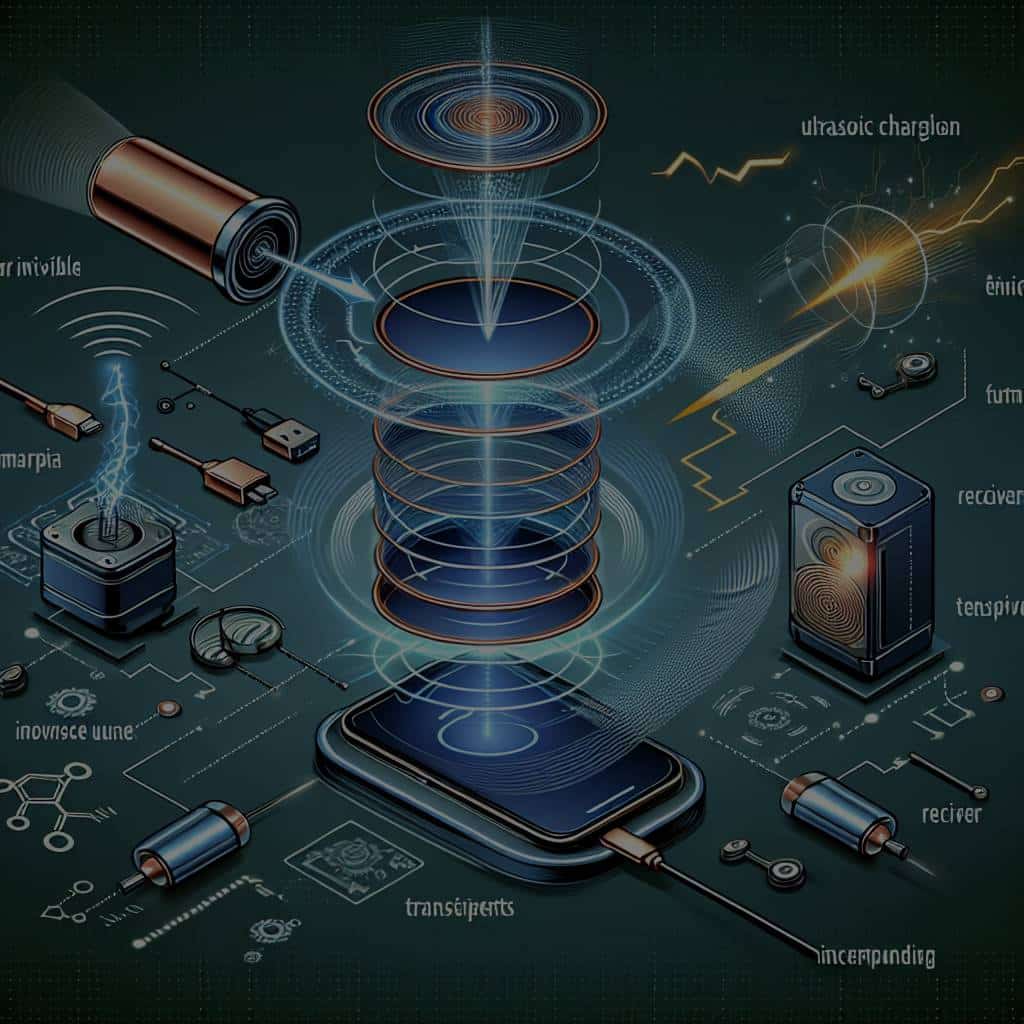What Role Does Ultrasonic Charging Technology Play in Wireless Power Transfer?

In the technology-driven world that we live in today, wireless power transfer (WPT) has become an integral part of our everyday lives. From charging our mobile devices to providing power to electric vehicles, this technology has made its way into numerous applications. But have you ever wondered about the role of ultrasonic charging technology in wireless power transfer? In this piece, we delve into the nuts and bolts of ultrasonic charging technology, its role in power transfer, and how it affects overall efficiency.
Delving into the Concept of Wireless Power Transfer
Before we delve into the specifics of ultrasonic charging technology, let’s first understand the concept of wireless power transfer. This technology is not a new concept; however, its practical implementation has gained momentum only in the recent years.
Have you seen this : Is Artificial Photosynthesis a Viable Option for Renewable Energy Production?
Wireless power transfer is essentially the transmission of electrical energy from a power source to a consuming device without using solid wires or conductors. This transfer takes place via electromagnetic fields. The technology can be broadly classified into near-field or non-radiative methods such as inductive charging, and far-field or radiative methods involving microwaves or lasers.
A typical WPT system comprises the transmitter, which is connected to the power source, and the receiver, which is connected to the device or load. The transmitter and receiver are usually coupled through coils, forming a transformer to facilitate energy transfer. The frequency of operation, the type of coils used, and the distance between the transmitter and receiver are all crucial factors impacting the efficiency of the system.
Have you seen this : Promoting sustainable fashion with AI-generated images
Ultrasonic Charging Technology: A Synopsis
Ultrasonic charging is a relatively recent breakthrough in the field of WPT systems. It is a type of contactless charging technology that uses the principles of ultrasound to transmit energy.
In ultrasonic charging systems, the transmitter converts electrical energy into high frequency acoustic waves. These waves are directed towards the receiver through the air or another medium. The receiver then captures these waves and converts them back into electrical energy.
The key component in both the transmitter and receiver is the piezoelectric transducer. This component acts like a coil in magnetic resonance charging systems. The main difference is that instead of using electromagnetic waves, ultrasonic charging technology uses acoustic waves for power transmission.
The Role of Ultrasonic Charging Technology in WPT Systems
Given its unique characteristics, ultrasonic charging technology plays a significant role in WPT systems.
One of the major benefits of this technology is the ability to transfer power over greater distances compared to traditional inductive charging methods. This is because acoustic waves can travel through different mediums, including air, water, and certain materials, with minimal loss of energy.
Another advantage is the potential for high efficiency power transfer. Since ultrasonic charging technology uses high frequency acoustic waves, it can achieve higher energy transfer efficiency than lower frequency electromagnetic waves. Furthermore, by using adaptive tuning techniques, the system can optimize the operating frequency and impedance matching between the transmitter and receiver to further enhance efficiency.
The use of ultrasonic charging technology also allows for more flexible and convenient power transfer. Unlike other wireless charging methods, ultrasonic charging does not require precise alignment between the transmitter and receiver. This makes it particularly suitable for charging multiple devices simultaneously or for devices that are in motion.
Ultrasonic Charging Technology: A Look into the Future
With the rapid advancement in wireless power transfer systems, ultrasonic charging technology is expected to play a major role in shaping our wireless future.
Notably, the technology has vast potential in the development of Internet of Things (IoT) devices. According to a scholar report from the Institute of Electrical and Electronics Engineers (IEEE), ultrasonic charging technology can overcome the limitations of conventional power supply methods for IoT devices. For instance, it can enable efficient power transfer to devices in hard-to-reach locations or those that require a fully sealed environment for operation.
Another promising application of ultrasonic charging technology is in electric vehicle charging. Traditional plug-in charging methods not only require manual intervention but also pose safety risks. With ultrasonic charging technology, vehicle owners could simply park their cars over a charging pad with a built-in transmitter.
In conclusion, ultrasonic charging technology is a game-changing innovation in the field of wireless power transfer. Its unique characteristics, such as the ability to transfer power over greater distances and at higher efficiencies, make it an appealing option for a variety of applications. As we continue to explore and develop this technology, it will undoubtedly open up new possibilities for a truly wireless future.
Advancements in Medical Applications Using Ultrasonic Charging Technology
The application of ultrasonic charging technology in the field of medical devices holds immense potential. Wireless power transfer can bring about a significant transformation in the medical field, bringing comfort and convenience to patients and healthcare providers alike.
Medical implants such as pacemakers, cochlear implants, and drug delivery pumps often require periodic battery replacement, which can be invasive and risky. However, with ultrasonic charging technology, these devices can be wirelessly charged inside the body, eliminating the need for surgical battery replacements. The high frequency of operation allows for high efficiency energy transfer, even through biological tissues, and the adaptive tuning techniques can optimize the power transmission for minimal energy loss.
Furthermore, unlike other forms of wireless charging, ultrasonic charging does not require precise alignment between the transmitter and receiver, making it a robust method for charging devices located inside the human body. A study published in a Google Scholar report revealed that ultrasonic charging technology can promote efficient power transfer to medical implants.
Another significant advantage of ultrasonic charging is that it does not generate a strong magnetic field. This is particularly important in the medical context as strong magnetic fields can interfere with the functioning of other medical devices and can be harmful to patients.
Conclusion: The Future of Ultrasonic Charging in Wireless Power Transfer
As we delve into the future of wireless power, ultrasonic charging technology is expected to become an integral part of our everyday lives. According to an IEEE trans report, this technology is set to revolutionize the way we think about charging and power transfer.
From powering IoT devices in remote or sealed environments to charging electric vehicles and medical implants, the versatile applications of this technology make it a compelling choice. The ability to transfer power over greater distances, its potential for high energy transfer efficiency, and its flexibility in terms of placement of the transmitter and receiver, mark this technology as an important innovation in the wireless power transfer system.
Moreover, the use of acoustic waves instead of electromagnetic waves eliminates the interference with other electronic devices, making it a safe charging method in various environments.
In conclusion, the role of ultrasonic charging technology in wireless power transfer is vast and ever-growing. The continued development and application of this technology will not only bring about new possibilities for a truly wireless future but also enhance the usability and functionality of the devices that are central to our lives.
